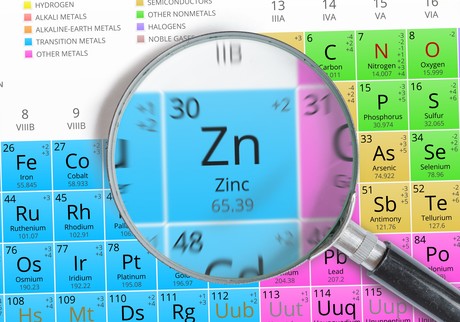Layered oxides enable rechargeable zinc batteries

Saudi Arabian researchers are developing layered oxides for zinc-ion batteries, in a study that seeks to overcome the issues associated with scaling up lithium-ion batteries.
Lithium-ion batteries power most of our everyday electronic devices, such as smartphones and laptop computers. But there is a growing need to store energy on much larger scales, such as retaining the electricity generated by solar cells for use at night. Scaling lithium-ion battery technology up to such an industrial-level application is expensive and presents serious safety issues, including toxicity and the flammability of the electrolytes.
Researchers at King Abdullah University of Science and Technology (KAUST) are instead developing zinc-ion batteries that use a water-based electrolyte, which has the advantages of being air stable, safe, environmentally friendly and cheap. As explained by team leader Husam Alshareef, “Aqueous batteries based on zinc ions can offer a safer, cost-effective solution to lithium-ion batteries for grid storage. Further, they use more environmentally friendly materials than lead-acid batteries.”
Lithium-ion and zinc-ion batteries work by electrically storing ions in an electrode. During charging, ions flow through an electrolyte from one electrode to another, where they are captured by a process known as intercalation. This means that electrode materials are key to optimising a battery’s performance.
One family of materials that has shown much promise in recent zinc-ion battery research is vanadium-based (or vanadate) compounds — materials which have a layered and very open atomic-crystal structure with plenty of spaces for trapping and storing zinc ions. The KAUST team has now developed a microwave approach to rapidly synthesise ultralong zinc pyrovanadate (Zn3V2O7(OH)2·2H2O) cathodes.
The researchers mixed Zn(NO3)2·2H2O with commercial NH4VO3 powder, each dissolved in deionised water, and applied microwave radiation to induce a reaction. The material was then dried before being used in a battery, with the results published in the journal Advanced Materials.
This zinc-ion battery was found to achieve an energy density of as much as 214 watt-hours per kilogram — which is much higher than previously reported aqueous zinc-ion batteries and commercial lead–acid batteries — with improved stability.
“Specifically, the ZVO cathode delivers high capacities of 213 and 76 mA h g−1 at current densities of 50 and 3000 mA g−1, respectively,” the researchers wrote. “Furthermore, the Zn//ZVO cells show good cycling stability up to 300 cycles. The estimated energy density of this Zn cell is ≈214Wh kg−1, which is much higher than commercial lead–acid batteries.
“In addition, it is shown that our prototype device can power a 1.5 V temperature sensor for at least 24 h.”
The team believes their microwave technique could also be useful for creating other metal pyrovanadate compounds, according to lead author Chuan Xia.
“We have already made compounds in which zinc is replaced with other cations that create larger metal-oxide polyhedra that are able to intercalate even higher amounts of zinc ions,” said Xia.
Computational model enhances battery safety
Researchers have developed a new computational model that offers insights into one of the key...
Novel method to extend lifecycle of Li-ion batteries
Researchers have uncovered a hidden surface degradation mechanism in the cathodes of lithium-ion...
Sensor could help prevent Li-ion battery fires
Researchers have developed new technology to detect dangerous gas leaks in lithium-ion batteries,...





